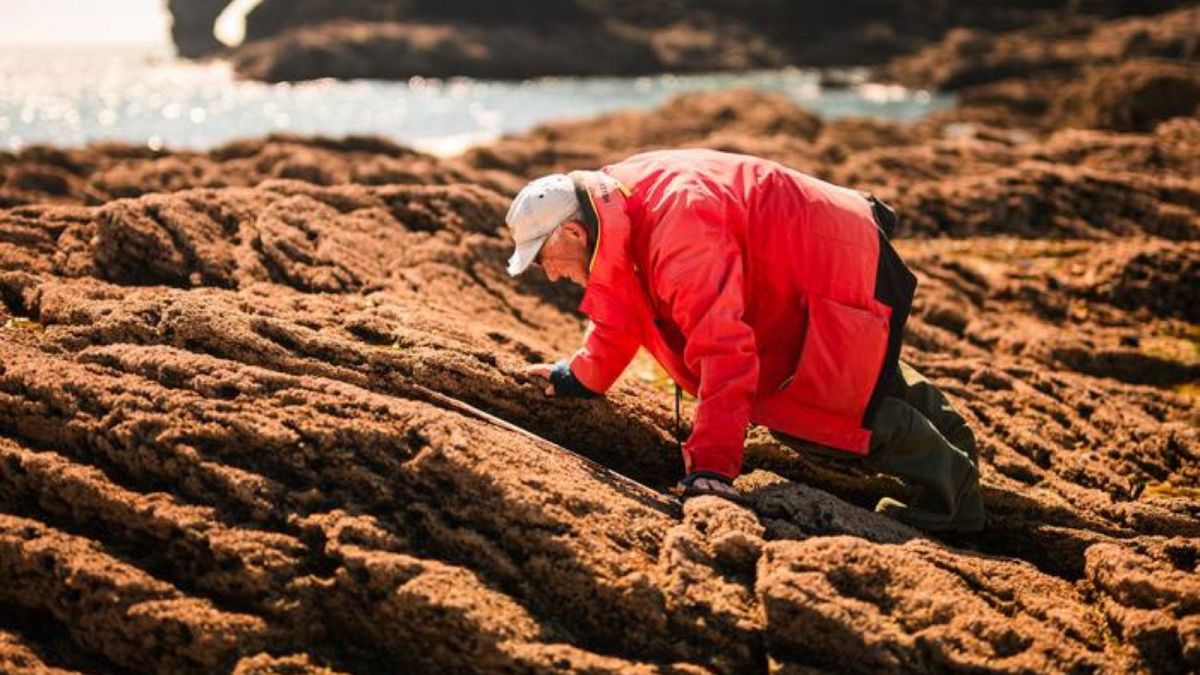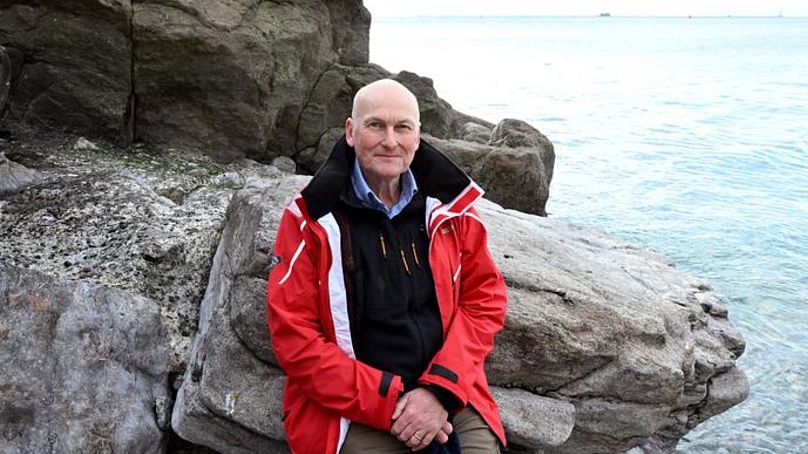Twenty‑Five Years Later: Did Scientists Nail Coastal Threat Predictions—or Miss Them?

Shifting Threats to Rocky Shore Ecosystems
1. Agricultural Runoff
Farm operations near coastal zones often contribute excess nutrients and pesticides into the surrounding waters. This influx can cause:
- Algal Blooms that deplete oxygen, killing marine life.
- Destruction of sensitive coral and kelp beds.
- Introduction of harmful chemicals that disrupt local flora and fauna.
2. Invasive Species Proliferation
Non‑native organisms, introduced through shipping or human activity, threaten native biodiversity by:
- Outcompeting indigenous species for food and habitat.
- Altering the physical structure of rocky reefs.
- Creating unpredictable ecological cascades that weaken community resilience.
3. Climate Change Impacts
Rising temperatures and sea levels impose multiple stresses on shore environments:
- Acidification of seawater, impairing calcifying organisms such as shellfish.
- Warmer currents that shift species distributions farther offshore.
- Increased storm intensity leading to physical erosion of rocky substrates.
4. Combined Effects and Management Strategies
When these factors interact, the compounded damage highlights the need for integrated management:
- Adopting precision agriculture to reduce runoff.
- Monitoring shipping routes to prevent new invasions.
- Implementing buffer zones and coastal restoration projects.
- Enhancing scientific collaborations to forecast and mitigate climate‑driven changes.
ADVERTISING
Century‑Long Coastal Projections Revisited
In the early 2000s, a consortium of respected marine scientists assembled a forecast of the most pressing threats anticipated to shape Earth’s shorelines in the decades ahead.
Fast forward to 2025, and the same group, along with other specialists, has reassessed their predictions, delivering a fresh analysis of coastal conditions worldwide.
New Findings Published in the Marine Pollution Bulletin
The recent paper outlines where the original forecasts were accurate and where they fell short.
Professor James Hawkins, a Lankester Research Fellow at the Marine Biological Association and a former Professor at the University of Southampton, stresses the role of coastlines as “watchdogs of the global ocean,” underscoring how they reflect broader marine health.
- Key Strengths: Certain anticipations regarding erosion patterns and salinity increases proved correct.
- Key Gaps: Some predicted chemical runoff levels did not materialize as expected.
Hawkins emphasizes that protecting these critical ecosystems remains vital, yet they face a relentless barrage of dangers from terrestrial activities, maritime operations, and climatic shifts.
Insights from the 2002 Study
While the initial report demonstrated the feasibility of forecasting many coastal challenges, it acknowledged that unforeseen events will persist and that not every predicted scenario will unfold as scientists imagined.
What did the scientists get right in their shoreline predictions?
Recent Trends in Marine Environmental Challenges
Decline of Oil Spills
Oil spill incidents have been trending downward in both frequency and volume, a development that traces back to the strategies implemented in the 1970s. Despite occasional high‑profile tanker accidents, the most significant spill in the past twenty years was the Deepwater Horizon disaster in the Gulf of Mexico, resulting from the explosion of a BP‑owned drilling rig.
Modern eco‑friendly cleanup techniques have played a pivotal role in mitigating post‑spill damage, substantially reducing the environmental footprint of these events.
Spread of Non‑Native Marine Species
Professors Hawkins and Richard Thompson, both marine biology experts at the University of Plymouth, accurately forecasted an increase in the global distribution of invasive organisms as ocean temperatures rise.
- One notable example is the warm‑water barnacle Austrominius modestus, first introduced to southern England in the 1940s.
- Its range now stretches from Denmark to southern Portugal, extending northward into Scandinavia.
- These barnacles dominate rocky intertidal zones, outcompeting native species.
Sediment Load from Development
The authors correctly highlighted that the expansion of industrial agriculture, along with riverside and coastal urbanization, has amplified sediment transport into rivers, estuaries, and the sea.
This increased sediment load alters water clarity, nutrient dynamics, and habitat structure, posing additional challenges for marine ecosystems.
Related Issues Highlighted by Studies
Efforts to understand and mitigate ecological impacts extend into diverse areas, such as:
- The role of raccoons in Germany’s ecosystems.
- Legal actions addressing large‑scale pollution from pig farms in Spain.
What went better than expected?

Professor Thompson Makes the 2025 TIME “100 Most Influential” List
Professor Thompson has been honored by TIME magazine for his critical work on microplastics, marking the latest addition to its 100 most influential figures worldwide in 2025.
Revisiting the 2002 Forecast
- The 2002 study fell short of optimism regarding the decline of hazardous chemicals, specifically tributyltin (TBT).
- Subsequent international legislation effectively curtailed TBT’s impact.
- Global and local strategies prove instrumental; the International Maritime Organization’s 2003 ban stands as a prime example.
Offshore Renewable Energy: An Unexpected Bonus
- Initial fears that wind farms could damage marine ecosystems have been disproved.
- These installations actually create new offshore habitats for rocky shore species.
- They act as stepping stones, enhancing the demographic connectivity among marine populations.
Related Developments
Recent glacier recession in the Arctic has exposed fresh coastlines, potentially heightening the risk of tsunami events.
Climate change threats were underestimated
New Study Highlights Overlooked Climate Threats
Although researchers long understood that climate shifts influence ecosystems, many did not fully grasp the breadth of consequences for species or the ecosystem functions they support. They also underestimated the scale and severity of extreme weather events that emerge from global warming.
Emerging Risks Revealed by Recent Research
- Increased Flooding and Drought – Studies now point to a higher likelihood of extreme floods and water shortages, jeopardising coastal fauna that depend on stable salinity.
- Coastal Mining Impacts – Extraction activities along coastlines further degrade habitats, a factor largely ignored two and a half decades ago.
- Ocean Acidification – Rising CO₂ concentrations lower sea pH, threatening marine food webs and reef integrity.
- Plastic Pollution Scale – Plastic debris has proliferated worldwide, causing widespread harm to marine life and landscapes.
International Collaboration and Vision
Professor Thompson and Professor Hawkins spearheaded this interdisciplinary study with Dr. Kathryn O’Shaughnessy and teams from the MBA, University of Plymouth, and institutions spanning the UK, US, South Africa, Italy, Ireland, Chile, China, and Monaco.
Reflecting on Past Successes
“As global dialogues move forward—considering initiatives like a Global Plastics Treaty and strategies to curb warming—recognising past environmental achievements is crucial for building a sustainable future,” Professor Thompson remarked.
This research underscores the need to broaden our perspective on climate impacts and reinforces the importance of continued global cooperation to safeguard ecosystems and biodiversity.





